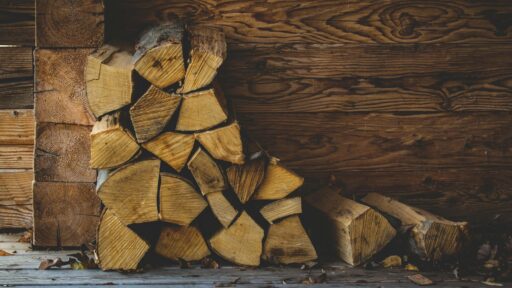If you’re following a low-carb lifestyle but find yourself missing the comforting taste and texture of fresh bread, you’re not alone. Traditional bread, loaded with carbs, can often feel like a forbidden treat for those watching their carbohydrate intake.
Fortunately, making delicious low-carb bread at home is easier than you might think.
1. Introduction to Low-Carb Bread
If you’re looking to enjoy the comforting taste and texture of bread without the heavy carb load, low carb bread is the perfect solution.
Whether you’re following a ketogenic diet, managing blood sugar levels, or simply aiming to reduce your carbohydrate intake, homemade low carb bread offers a delicious and satisfying alternative to traditional wheat-based loaves.
Unlike conventional bread, which is typically made from high-carb flours like wheat or white flour, low carb bread incorporates ingredients such as almond flour, coconut flour, flaxseed, or psyllium husk to keep the carb count minimal while still delivering great flavor and texture.
2. Benefits of Baking Low Carb Bread at Hom
Baking low carb bread at home comes with a host of benefits that go beyond just enjoying a tasty slice.
First and foremost, homemade low carb bread allows you full control over the ingredients, ensuring that you avoid unwanted additives, preservatives, and excess sugars commonly found in store-bought options.
Additionally, baking at home is often more cost-effective in the long run. Specialty low carb breads can be pricey, but by making your own, you save money while still indulging in your favorite comfort food.
Ultimately, baking low carb bread at home empowers you to maintain a healthier lifestyle.
3. Essential Ingredients for Low Carb Bread
When it comes to baking low carb bread at home, choosing the right ingredients is crucial to achieving that perfect texture and flavor while keeping the carbohydrate count minimal.
Unlike traditional bread that relies heavily on wheat flour, low carb bread uses alternative flours and binders to mimic the structure and taste without the excess carbs.
a) Almond Flour
This is one of the most popular low carb flour substitutes. Made from finely ground almonds, it adds a rich, nutty flavor and provides moisture and density to your bread. Almond flour is also packed with healthy fats and protein, making your bread more satisfying.
b) Coconut Flour
Known for its high fiber content, coconut flour absorbs a lot of moisture, so it’s typically used in combination with other flours. It imparts a subtle sweetness and helps create a tender crumb.
c) Psyllium Husk Powder
This natural fiber is a baking superstar in low carb recipes. It acts as a binder and gives bread that chewy, elastic texture similar to traditional wheat bread. Psyllium husk also supports digestive health.
d) Eggs
Eggs are essential in low carb bread as they provide structure, moisture, and richness. They help hold the bread together and contribute to a fluffy texture. If you are allergic to bread, please take safe caution to omit this ingredient.
e) Baking Powder and Yeast
Depending on whether you’re making a quick bread or a yeast bread, these leavening agents help your loaf rise and develop a light, airy crumb.
f) Healthy Fat
Ingredients like olive oil, butter, or coconut oil add moisture and richness to the bread, preventing it from becoming dry or crumbly.
4. Choosing the Right Flours and Substitutes
When it comes to baking low carb bread at home, selecting the right flours and substitutes is crucial to achieving the perfect texture and flavor.
Traditional wheat flour is high in carbohydrates, so it’s important to turn to alternatives that keep the carb count low without sacrificing taste.
Some of the most popular low carb flours include almond flour, coconut flour, and flaxseed meal.
Almond flour, made from finely ground almonds, provides a moist, slightly nutty flavor and works well as a base for many low-carb bread recipes.
Coconut flour, on the other hand, is highly absorbent and requires careful measurement and additional moisture in your recipe to prevent your bread from becoming too dry or crumbly.
Flaxseed meal not only adds fiber and healthy fats but also helps bind ingredients together, improving the bread’s structure.
In addition to these, other substitutes like psyllium husk powder are valuable for adding elasticity and a chewy texture that mimics traditional bread. Experimenting with blends of these flours often yields the best results, as each brings unique properties to the dough.
Note: Low-carb flours behave differently from wheat flour, so it’s important to follow recipes designed specifically for them or to adjust moisture and binding agents accordingly.
5. Understanding Different Types of Low Carb Bread
When diving into the world of low carb bread, it’s essential to understand that not all low carb breads are created equal. The variety available caters to different tastes, dietary needs, and baking preferences, so knowing the differences can help you pick or make the perfect loaf for your lifestyle.
a) Almond Flour Bread
One of the most popular options, almond flour bread is made primarily from finely ground almonds. It offers a moist texture and slightly nutty flavor, making it a great substitute for traditional wheat bread. It’s rich in healthy fats and protein, which help keep you full longer.
b) Coconut Flour Bread
Made from dried and ground coconut meat, coconut flour bread has a lighter, slightly sweet flavor. It tends to be more absorbent and dense, so recipes often require extra eggs or liquids to achieve the right consistency. This bread is a fantastic choice if you’re looking to avoid nuts.
c) Flaxseed Bread
Flaxseed is a powerhouse ingredient packed with fiber and omega-3 fatty acids. Flaxseed breads have a hearty, earthy flavor and a dense texture. They’re excellent for those seeking additional nutritional benefits alongside low carbs.
d) Psyllium Husk Bread
Psyllium husk is a form of soluble fiber that provides structure and elasticity to low-carb bread, mimicking the texture of traditional bread more closely than many other alternatives. It’s often combined with other low-carb flours to improve chewiness and moisture retention.
Each type of low carb bread brings its own unique qualities to the table, whether it’s flavor, texture, or nutritional profile. Experimenting with different ingredients and recipes will help you discover which variety suits your taste buds and dietary goals best.
6. Tools and Equipment You’ll Need
While low carb bread recipes often require similar tools to traditional baking, there are a few essentials that will help you achieve the best texture and flavor.
First and foremost, a high-quality mixing bowl is essential. You can just go for a large, sturdy bowl that allows you to mix ingredients thoroughly without making a mess.
Since many low-carb breads use alternative flours like almond or coconut flour, proper mixing is key to avoiding clumps and ensuring even distribution of ingredients.
Next, invest in a reliable kitchen scale. Measuring ingredients by weight rather than volume is especially important in low carb baking, where precision can affect the bread’s rise and texture. A digital scale with a tare function will streamline your prep and improve consistency.
A silicone spatula and a sturdy wooden or silicone spoon will also come in handy for folding and mixing thicker low carb doughs. Unlike traditional wheat doughs, many low carb doughs tend to be stickier or denser, so having flexible utensils makes handling easier.
For shaping and baking, consider using non-stick loaf pans or silicone bread molds. These help ensure your bread doesn’t stick and allow for easy removal once baked. Additionally, a cooling rack is essential to let your bread cool evenly and prevent sogginess.
If you want to take your baking up a notch, a stand mixer with a dough hook attachment can save time and effort, especially when working with denser doughs. However, many low carb bread recipes can be mixed by hand, so this is optional.
Lastly, having an oven thermometer is a small but valuable tool to guarantee your oven is at the right temperature, as baking low carb bread often requires precise heat control for the best rise and crust.
7. Step-by-Step Basic Low Carb Bread Recipe
Baking your own low carb bread at home is easier than you might think, and it’s a fantastic way to enjoy fresh, healthy bread without the carbs. Here’s a simple, step-by-step recipe to get you started.
Ingredients
You’ll need:
- 2 cups almond flour
- 1/4 cup coconut flour
- 1/4 cup ground flaxseed
- 1 tablespoon baking powder
- 1/2 teaspoon salt
- 4 large eggs
- 1/4 cup melted butter or coconut oil
- 1/2 cup unsweetened almond milk
- 1 tablespoon apple cider vinegar
Instructions
1. Preheat your oven: Set your oven to 350°F (175°C) and line a loaf pan with parchment paper or grease it well to prevent sticking.
2. Mix dry ingredients: In a large bowl, combine the almond flour, coconut flour, ground flaxseed, baking powder, and salt. Whisk them together to ensure they’re evenly distributed.
3. Whisk wet ingredients: In a separate bowl, beat the eggs thoroughly. Add the melted butter, almond milk, and apple cider vinegar, mixing well.
4. Combine wet and dry: Pour the wet ingredients into the dry ingredients and stir until a thick batter forms. The batter will be denser than traditional bread dough — that’s normal for low carb bread.
5. Pour and smooth: Transfer the batter into your prepared loaf pan, smoothing the top with a spatula so it bakes evenly.
6. Bake: Place the pan in the oven and bake for 40-45 minutes, or until the top is golden brown and a toothpick inserted into the center comes out clean.
7. Cool before slicing: Allow the bread to cool completely in the pan before slicing. This step is crucial as it helps the bread firm up, making it easier to cut without crumbling.
This basic low carb bread is perfect for sandwiches, toast, or simply enjoying with some butter and your favorite toppings. Plus, it stores well in the fridge or freezer.



